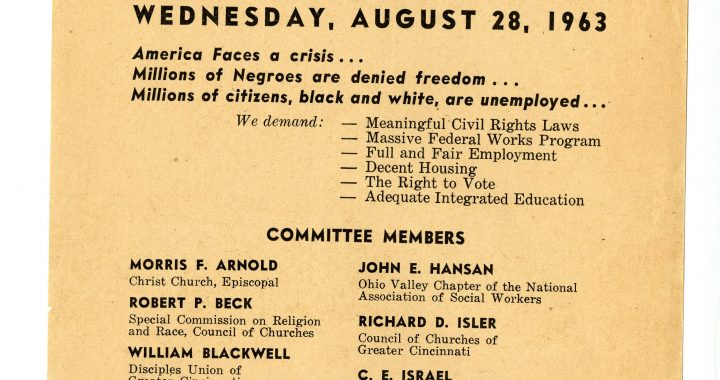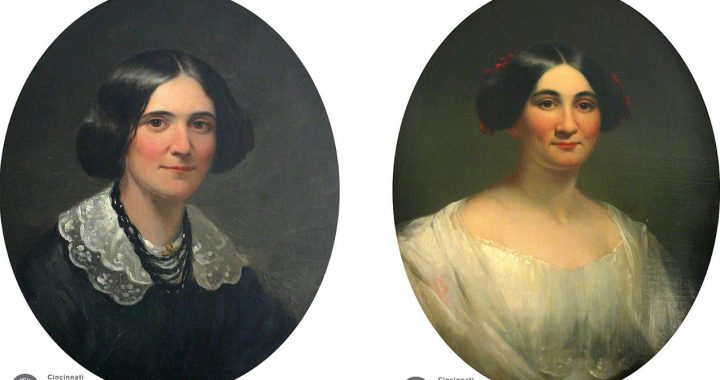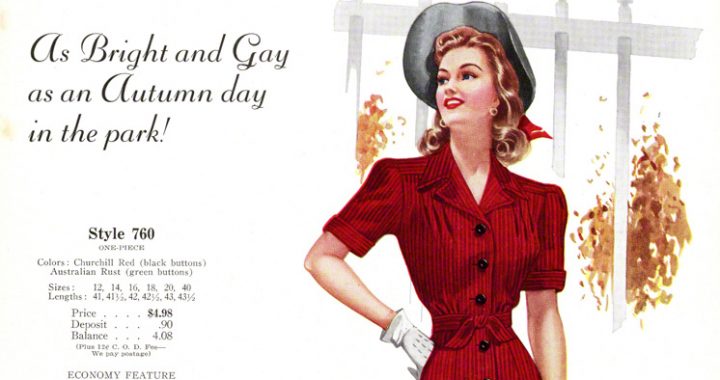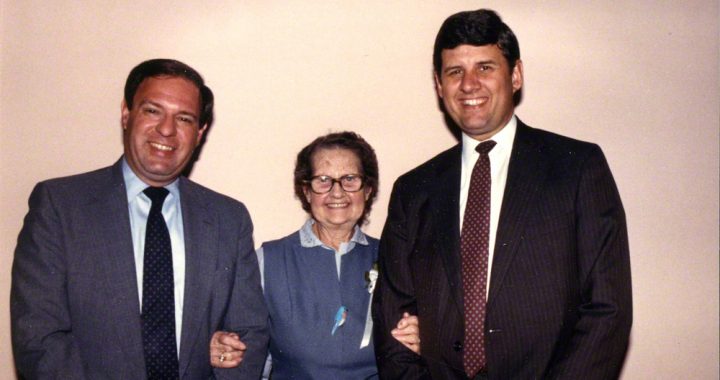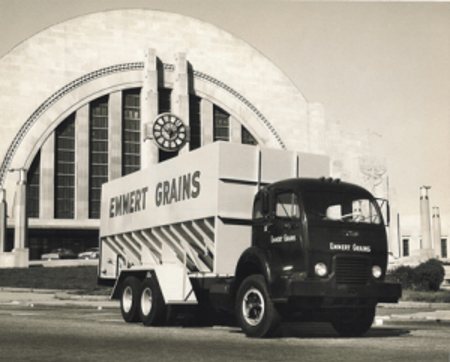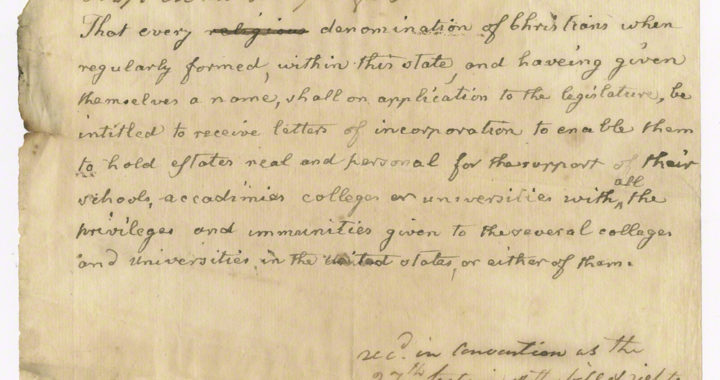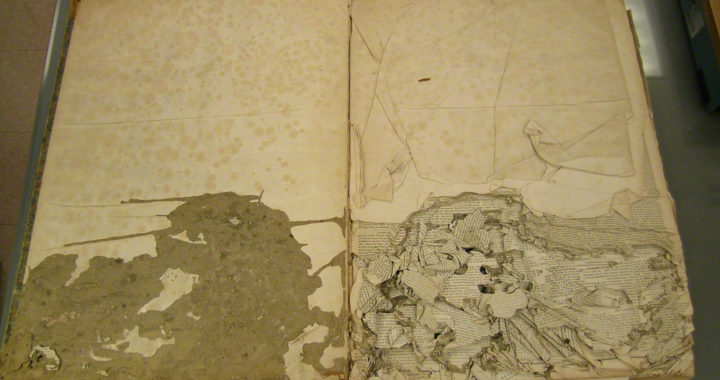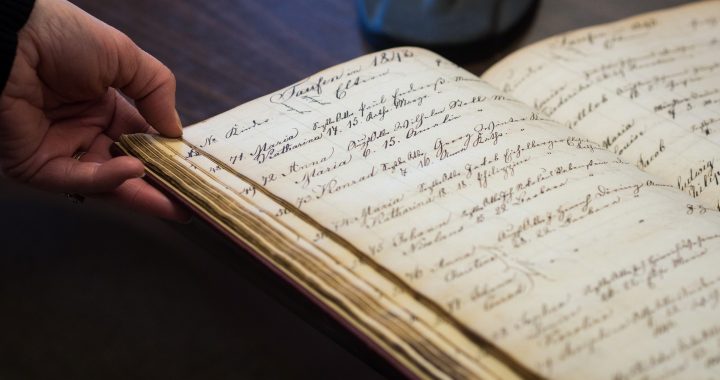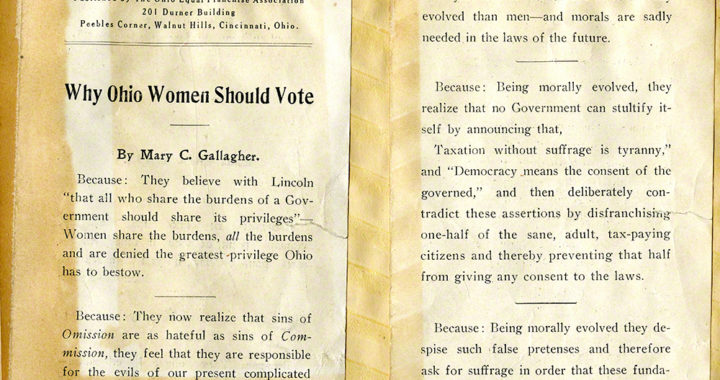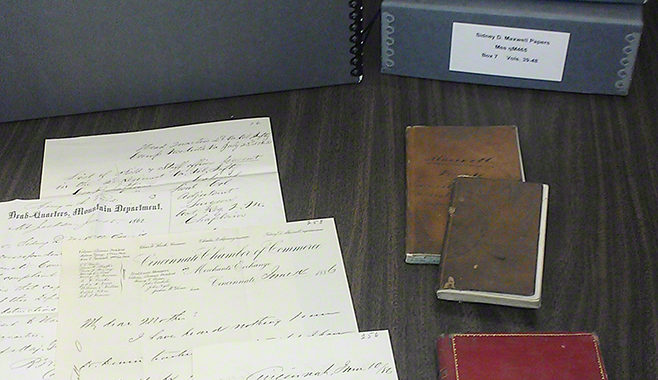Cincinnati Museum Center is fortunate enough to care for and permanently house a rare collection of original Cincinnati radio transcription discs from local radio stations, including the well-known WLW-WSAI Broadcasting Corporation. Keep reading to find out more about this rare piece of history!
[READ MORE]Category Archives: Archives and manuscripts
Clovernook and the Trader Sisters
The Trader sisters worked to help blind and visually impaired people live an independent life in their own homes. Read more to learn how they did it!
[READ MORE]Fashion Frocks
Philip M. Meyers started working for his father’s Princess Garment Company in 1922. He left in 1925 to found his own company, Fashion Frocks, Inc., a garment manufacturer that directly sold to consumers.
[READ MORE]Super-Volunteer: Minnie “Dolly” Varley
Minnie “Dolly” Anson was born on June 25, 1904 in England. Inspired by her own mother, who was a long-time volunteer for the Red Cross, Dolly joined the Junior Red Cross while living in Australia.
[READ MORE]The Long Arm of Prohibition: The F. L. Emmert Company’s Struggle to Survive
Savior Maier and his son-in-law, F. L. Emmert, opened a saloon at the corner of Clifton and Vine streets in 1881. In the day-to-day operation of the saloon, Maier and Emmert learned that brewers were struggling to deal with the large quantities of wet mash, or spent grain, a byproduct of brewing. Seeing an opportunity, Emmert changed the focus of his business and started dealing in spent brewer’s grain.
[READ MORE]See the First Drafts of Ohio’s Constitution
The corrections on the documents are a very interesting piece to inspect. Some changes were cosmetic while others more substantive.
[READ MORE]Preservation Tip: Dealing With Insect Damage
Insects are attracted to materials containing cellulose. Paper-based collections (documents, books, newspapers) contain cellulose and need to be protected from insect attack. Storing collections in cool dry spaces is preferable because there is a link between higher temperature and relative humidity, and increased insect activity.
[READ MORE]From the Card Catalog to the Internet
The challenge facing me and my team is to fit older collections into these new standards and to get them online so researchers can see that we have them.
[READ MORE]The Fight for the Vote
For many years, women in this country were denied even the most basic constitutional rights. They could not speak publically, sign contracts, gain a formal education, successfully own property separate from husbands or fathers or retain custody of their own children.
[READ MORE]Collections 101: What’s a Collection? Does your collection have good provenance?
Museums and libraries collect materials in an effort to document human history and to learn more about the natural world. Museum Center acquires and preserves its collections of historically- or scientifically-important items as a public trust.
[READ MORE]